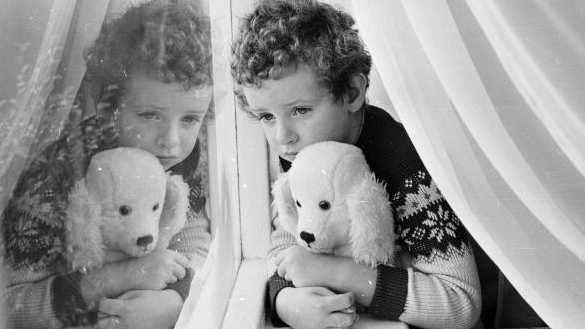The Adverse Childhood Study found that survivors of childhood trauma are up to 5,000 percent more likely to attempt suicide, have eating disorders, or become IV drug users. Dr. Vincent Felitti, the study’s founder, details this remarkable and powerful connection.
Vincent Felitti: What we found in the ACE study involving seventeen-and-a-half thousand middle-class adults was that life experiences in childhood that are lost in time and then further protected by shame and by secrecy and by social taboos against inquiry into certain realms of human experience — that those life experiences play out powerfully and proportionately a half century later, in terms of emotional state, in terms of biomedical disease, in terms of life expectancy. In 1985, I first became interested in developmental life experiences in early childhood really by accident. In the major obesity program we were running, a young woman came into the program. She was 28 years old, and weighed 408 pounds, and asked us if we could help her with her problem. And in 51 weeks, we took her from 408 to 132. And we thought, well my god, we’ve got this problem licked. This is going to be a world-famous department here! She maintained her weight at 132 for several weeks, and then in one three-week period regained 37 pounds in three weeks, which I had not previously conceived as being physiologically possible. That was triggered by being sexually propositioned at work by a much older man, as she described him. And in short order, she was back over 400 pounds faster than she had lost the weight. I remember asking her why the extreme response. After initially claiming not to have any understanding of why the extreme response, ultimately she told me of a lengthy incest history with her grandfather, from age 10 to age 21. Ultimately it turned out that 55 percent of the people in our obesity program acknowledged a history of childhood sexual abuse. I mean, that obviously is not the only issue going on, but it was where we began. And as we went down that trail, then we discovered other forms of abuse, also growing up in massively dysfunctional households, et cetera. The ACE study was really designed to see whether these things existed at all in the general population, and if so, how did they play out over time?
We studied 10 categories of adverse life experience that were chosen because of their prevalence in the weight program: childhood sexual abuse; heavy-duty childhood physical abuse — I’m not talking spanking — um; major emotional abuse (recurrent humiliation); two categories of neglect; growing up in a home where one of the members of the household, uh, was chronically depressed, suicidal, mentally ill, or in the state hospital; growing up in a home without both biological parents; growing up in a home where, um, one of the members of your household was alcoholic or a drug user; growing up in a home where mother was beaten; growing up in a home where one of the members of your household was imprisoned during your childhood or adolescence. Those were the 10 categories. In a middle-class population, one in 11 people has experienced six or more of those adverse life experiences in childhood. So this is very common. Totally unrecognized. It was difficult for us to accept their commonness. But on the other hand, these are issues that most people never touch. And so who would know without routinely asking? But at a so-called ACE score of six, experiencing any six of the 10 categories that we studied, that person was 4,600 percent more likely to become an IV drug user than a person who had experienced none of those 10 categories. Okay? Now, you know, you think, you read the newspaper, the latest cancer scare of the week, prostate cancer or breast cancer increases 30 percent, and everyone goes nuts. I’m talking 4,600 percent increase. The same ACE score of six produces a likelihood of attempting suicide that is between 3,100 percent and 5,000 percent greater than the likelihood of suicide attempts in someone with none of those life experiences. So the power of this relationship is enormous.
So ultimately the question arises: How do life experiences in childhood end up with disease states a half century later? There are at least two big categories to account for that. One is through the use of various coping devices. One smokes to feel better; one overeats to feel better; one drinks to relax, et cetera. And those things carried out in heavy amounts have major destructive patterns, even though they may be immediately beneficial. The other broad category has to do with the effect of chronic major unrelieved stress on the workings of one’s brain and central nervous system. In recent years, this is relatively new; it’s become clear that chronic major unrelieved stress can produce the release of pro-inflammatory chemicals in a person’s body, and also can suppress immune system function. Of the 10 categories that we studied, any six of them produces a shortening in life expectancy of almost 20 years. The magnitude of this problem is so huge, and the complexity of dealing with it after the fact is so huge, that realistically, the only serious approach is going to have to involve primary prevention. No one knows how to do that, but it’s the right question to focus on.




